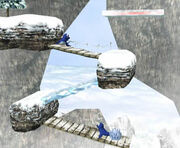|

Icicle Mountain in Melee.
Infinite Glacier: Icicle Mountain is a stage in the GameCube's Super Smash Bros. Melee. The mountain is seemingly endless, though in Super Smash Bros. Brawl, it was revealed that there was indeed a top to it. Supposedly, it is based off of the mountains from the Ice Climber series, with the stage's title referencing the "glacial mountain" motif of the series.
Stage Features[]
The stage scrolls up and down without limit on its height, hence the alternate name, "Infinite Glacier," and traditionally switches directions and changes speed. Most platforms are thin so players can jump through them but thick rocks and ice can prevent passage. The ice platforms can be broken and are slippery. Some platforms fall if stood on for too long.
Adventure Mode[]
This stage appears in the Adventure Mode, though it only scrolls vertically and Polar Bears and Topis are scattered across the climb. After about 2 minutes pass and the player proceeds to continue scaling the Icicle Mountain instead of attacking the opposing Ice Climbers team, the player will eventually reach the two-platform summit of the mountain and the screen will stop scrolling vertically at this point.
Music[]
Super Smash Bros. Melee[]
- Icicle Mountain
- Balloon Fighter
Origin[]

The fourth level in Ice Climber featuring a pair of icicles.
This stage is liberally based on Ice Climber, in which the goal is to attempt to get to the top of the mountain by jumping through blocks while dodging obstacles, such as falling icicles, and antagonists. If the Ice Climbers get hit by an antagonists or a falling icicle, the player loses a life. If the Ice Climbers remain idle for too long to complete a level, a Polar Bear appears and jumps to make the screen scroll up, causing them to lose a life if forced offscreen. In this stage, destructible blocks and icicles appear; however, the icicles do not fall nor damage fighters. The stage scrolling up the mountain is also similar to Polar Bears causing the screen to scroll up.
This stage comes from Ice Climber. The goal of Ice Climber is to attempt to get to the top of the level while dodging obstacles and antagonists. In Ice Climber, players would have to jump to break through blocks in order to progress through the stage. This stage also have destructible blocks that can be dissolved to get through. In addition, there are icicles that would form and fall. If the player got hit by the icicle, the player will lose a life. Icicles can be seen in this stage, but they do not damage players. If the player remains idle for too long in a stage in Ice Climber, a Polar Bear would appear and jump to make the screen scroll up. In the Infinite Glacier, if players were to remain idle for too long while near the bottom of the stage while a Polar Bear is in sight, the Polar Bear will jump and stomp onto the ground, forcing the stage to scroll up and risking players to near the bottom blast zone. Additionally, this stage scrolling down in this stage could also be a reference to the Polar Bear being up to move the stage down (considering the levels do not move on their own in Ice Climber, like in Melee).[1] [1]
There are a pair of songs for Icicle Mountain. One is the title screen of Ice Climber (which is also the same song heard for the bonus stages) mixed in with the music heard for the "mountain" stages. The other song is the music for the Balloon Flight mini-game of Balloon Fight. [2]
Trivia[]
- It is likely that the stage's alternate title, Infinite Glacier, comes from the fact that mountains in Ice Climber lack limitations in their height.
- Any "artificial-intelligence" character tends to self-destruct easily when the stage starts scrolling immediately upwards. This is because the AI will ascend only one platform at a time, frequently leading to them not moving quickly enough to escape the lower blast line.
- Infinite Glacier, along with Mushroom Kingdom, Mute City, and Poké Floats, are the only stages not to reappear outside of Melee, with Flat Zone being represented by Flat Zone X.
